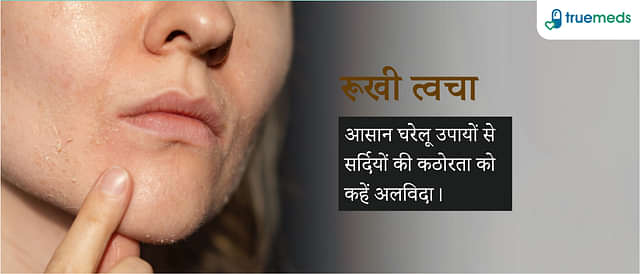Uveitis: overview, causes, symptoms, and treatment
Last updated on : 30 Oct, 2024
Read time : 6 min
Eye inflammation is uveitis. The middle layer of tissue on the eyewall is affected (uvea).
Uveitis (u-vee-I-tis) warning indicators can develop out of nowhere and deteriorate. Among them are eye redness, irritation, and blurred vision. People of all ages, including children, can change this ailment, which can damage one or both eyes.
Uveitis is an infection, injury, or autoimmune or inflammatory disease. Uveitis is a blinding disorder. treatment as soon as possible to avoid complications and keep your vision.
Eye inflammation
Inflammation of the eye’s eyelids tissues arises as a result of infection, allergies.
Depending on what caused the inflammation, different areas of the eye may be found. Inflammation of the eyes is a common occurrence that can affect people of all ages. The kind and severity of the underlying disease, disorder.
The condition will determine how long the eye inflammation lasts and how long it treat. Eye irritation may usually be treated. In rare circumstances, but, a significant condition that threatens eyesight may be present. It’s critical to get a diagnosis right away. If you see any of the signs or symptoms of eye inflammation, make an appointment with your doctor.
Eye inflammation treatment
Glaucoma is a disorder in which intraocular pressure rises, endangering the optic nerve.
The normal lens of the eye becomes clouded with a cataract.
For good reading vision, edema in the cystoid macula, which is located in the centre of the retina.
which can lead to retinal detachment, internal bleeding, and retinal detachment is neovascularization.
The best prognosis is for anterior uveitis, the most frequent inflammation. Eye drops are the first line of defence against anterior uveitis. Your ophthalmologist will most likely prescribe an anti-inflammatory
Which dilating eye drop regimen to treat your pain.
For some, more severe types of inflammation, oral drugs or injections may need. Because ocular inflammation is so common, most patients may need long-term monitoring.
In some cases, maintenance therapy to avoid recurrence.
Types of uveitis
Anterior
Uveitis produces inflammation at the front of the eye and is the most frequent form. If the symptoms are modest, they may occur and disappear on their own. Some people suffer from chronic, recurrent eye inflammation that improves with treatment. If you have:
- Sarcoidosis or juvenile idiopathic arthritis are examples of autoimmune disorders.
- Irritable bowel disease, for example, is a type of gastrointestinal ailment (IBD).
- Herpes virus (cold sores or genital herpes) or chickenpox virus infections in the past.
Intermediate Uveitis
Intermediate uveitis is more common in young adults. Inflammation of the centre of the eye by this disorder. The vitreous, a fluid-filled region inside the eye, affected by cyclitis or vitreous. Symptoms may improve, then go, only to reappear and worsen. Approximately one out of every three persons with intermediate uveitis additionally has:
- Many sclerosis (MS) is a neurological condition that affects (MS).
- Sarcoidosis.
Posterior
Uveitis affects the inside region of the eye and is the least common kind. It’s usually the most serious as well. The retina, optic nerve, and choroid are all susceptible to this condition. Blood vessels supply the retina in the choroid. Choroiditis or chorioretinitis are terms used to describe the condition. This type can result in repeated symptoms that can last months or even years.
Chorioretinopathy, often known as birdshot retinopathy, is a type of chorioretinal
- Herpes or chickenpox virus are examples of viral etiologies.
- Lupus.
- Sarcoidosis.
- Syphilis.
- Tuberculosis
Panuveitis
Uveitis can infect all three layers of the eye, which is panuveitis. This variety is more serious and can lead to irreversible visual loss. Here are some reasons:
- Retinitis could be bacteria or fungi.
- Retinitis caused by a virus
- Toxoplasmosis.
- Lupus.
- Sarcoidosis.
- Syphilis.
- Tuberculosis is a disease that affects people all around the world (TB).
Uveitis symptoms
Uveitis symptoms have the following condition:
- Inflammation of the eyes
- Pain in the eye
- Detection of light
- Vision blurred
- In your peripheral vision, there are dark, floating spots (floaters)
- Vision problems
Symptoms might appear and worsen, but they can also develop in rare circumstances. One or both of your eyes may affect. There are times when there are no symptoms or evidence of uveitis.
The uvea is the tissue in the middle layer of the eye’s wall. The iris, ciliary body, and choroid make up the iris system. You can see the white part of your eye (sclera) and the colourful area of your eye (iris) when you look in the mirror (iris).
Inside the front of the eye, the iris is set. A component behind the iris is the ciliary body. Between the retina and the sclera, the choroid is a layer of blood veins. The retina, which is like wallpaper, lines the inside of the rear of the eye. Vitreous is a gel-like liquid that fills the inside of the rear of the eyeball.
Which area or components of your eye inflamed determine the type of uveitis you have:
- The inside of your front eye as well as the ciliary body, affect by anterior uveitis. The most frequent type of uveitis, known as iritis, is iritis.
- The retina and blood vessels below the lens as well as the gel in the centre of the eye.
- A layer on the interior of the rear of your eye, the retina or the choroid, is affected by posterior uveitis.
- When all layers of the uvea, from the front to the rear, are inflamed, it is panuveitis.
Uveitis causes
The exact origin of uveitis is unknown in half of all instances.
the condition may be an autoimmune illness affecting only the eye or eyes. If a reason, it could be one of the following:
Sarcoidosis, systemic lupus erythematosus, ankylosing spondylitis. Crohn’s disease is an example of an autoimmune or inflammatory disorder.
Cat-scratch disease, herpes zoster, syphilis, toxoplasmosis, or tuberculosis are examples of infections.
- an adverse effect of medication
- Injury to the eye or surgery
- A malignancy of the eye, such as lymphoma, occurs only very rarely.
Uveitis treatment
The initial step could be to use eye drops with anti-inflammatory medication. To avoid scarring and reduce eye twitches.
you may prescribe dilating eye drops and ocular muscle relaxants. If the drops aren’t effective, your doctor may prescribe a tablet or an injection.
If such therapies don’t work or if your uveitis is severe.
your doctor may prescribe harsher medications. Immunosuppressive medicines may be among these medications. Your immune system is weak as a result of these. They combine with corticosteroids.
If you have anterior uveitis treatment, your doctor prescribes eye drops. They may give you injections, oral drugs, or immunosuppressive treatment. They could also recommend an implanted device that distributes medication.
For the all latest coupons and offers on the medicines, follow us on Instagram and Facebook
Disclaimer
Our healthcare experts have carefully reviewed and compiled the information presented here to ensure accuracy and trustworthiness. It is important to note that this information serves as a general overview of the topic and is for informational purposes only. It is not intended to diagnose, prevent, or cure any health problem. This page does not establish a doctor-patient relationship, nor does it replace the advice or consultation of a registered medical practitioner. We recommend seeking guidance from your registered medical practitioner for any questions or concerns regarding your medical condition.
Popular Articles
Recommended Articles
Recent Articles
Top-Selling Medicines:
...View more
Top-Selling OTC:
...View more
Subscribe
Registered Office Address
Grievance Officer
Download Truemeds

Contact Us
Our customer representative team is available 7 days a week from 9 am - 9 pm.
v3.7.5
Our Payment Partners

























































